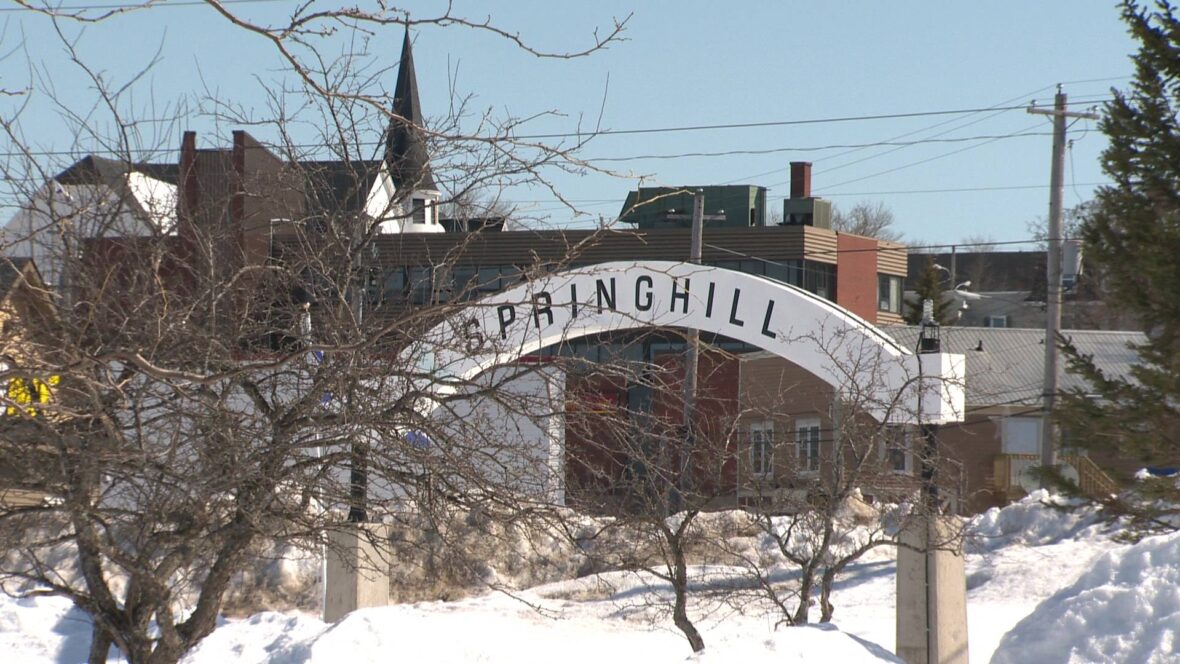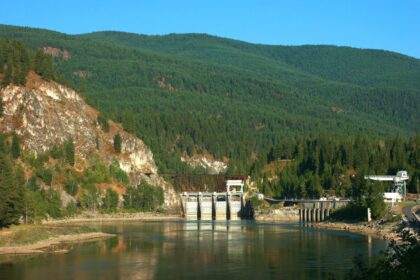Springhill is a community located in central Cumberland County, Nova Scotia, Canada. The community was founded as “Springhill Mines.” Coal mining lead to economic growth, with its incorporation as a town in 1889. Take a look below for 28 awesome and fun facts about Springhill, Nova Scotia, Canada.
1. The mines in the Springhill coalfield were established in the 19th century, and by the early 1880s were being worked by the Cumberland Coal & Railway Company Ltd. and the Springhill & Parrsboro Coal & Railway Company Ltd.
2. These entities merged in 1884 to form the Cumberland Railway & Coal Company Ltd., which its investors sold in 1910 to the industrial conglomerate Dominion Coal Company Ltd. (DOMCO). All coal mining had ceased in the area by the early 1970s.
3. The community is famous for both the Springhill Mining Disaster and being the childhood home of international recording star Anne Murray, who is honoured by the Anne Murray Centre, a popular tourist attraction.
4. As of 2015 the mine properties, among the deepest in the world were filled with water and provide Springhill’s industrial park with geothermal heating.
5. Geothermal energy from the waters of the abandoned mines are capable of providing heating and cooling for large buildings through the use of heat pumps.
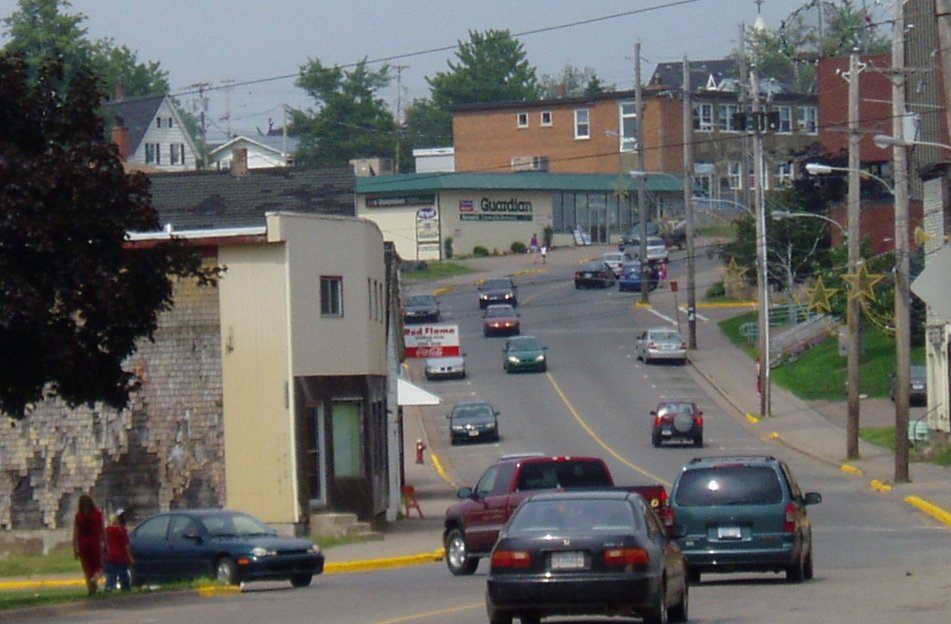
6. Because the water in a mine circulates by convection, shallow wells produce water of a temperature significantly higher than groundwater of the same depth.
7. In 2015 the Town of Springhill amalgamated into the Municipality of the County of Cumberland.
8. Canadian music icon Anne Murray was born and raised in Springhill, Nova Scotia. Her father, James Carson Murray, was the Springhill town doctor for many years. Her mother, Marion Margaret Murray, was a registered nurse who focused her life on raising her family and community charity work.
9. The Dr. Carson & Marion Murray Community Centre is named after her parents and is a short distance from the Anne Murray Centre which hosts an annual summer event and fundraiser that attracts tourists from around the globe.
10. Her musical accomplishments in pop, country, and adult contemporary music include albums selling over 55 million copies worldwide. Murray has received four Grammys, a record 24 Junos, three American Music Awards, and three Canadian Country Music Association Awards.
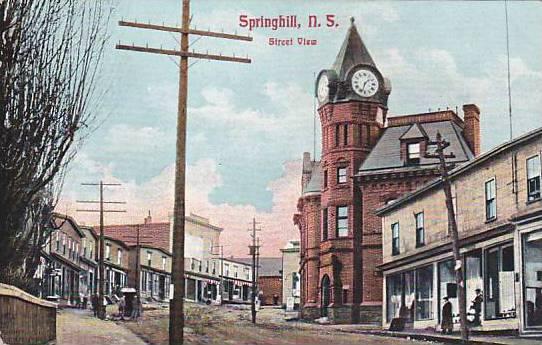
11. The Anne Murray Centre in Springhill offers a mini-recording studio to record your own duet, a gift shop, memorabilia and other artifacts spanning the 40 year music career of Anne Murray.
12. Springhill is located in the Cobequid Mountains sometimes referred to as the Cobequid Hills, which is a mountain range located in Nova Scotia in the mainland portion of the province. Geologically, the Cobequid Mountains are considered part of the Appalachians.
13. The range stretches from Cape Chignecto in Cumberland County in the west through to Pictou County in the east. As a hamlet protruding from the hillsides of Cumberland County, Springhill lies tucked away in the Nova Scotia interior uplands resting between the smooth summit of the Cobequid Mountains and the Bay of Fundy.
14. This craggy and rugged range is a long, narrow remnant of the Atlantic upland, stretching 75 miles across Cumberland County, from the head of the Bay of Fundy to the Northumberland Strait. When seen from a distance, particularly from a high altitude, the flatness of this mountainous range is notably distinct.
15. Broad, rounded summits, ranging in altitude from 850 to 1,000 feet, merge to form a somewhat rolling surface with an average altitude closer to 900 feet.
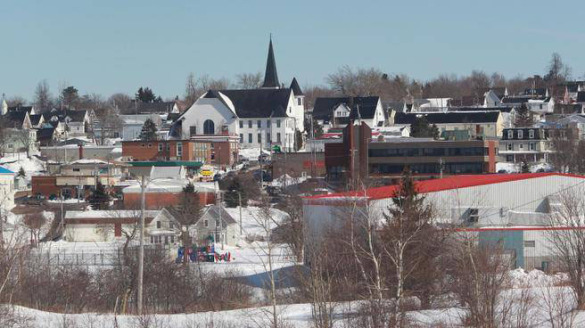
16. The undulating terrain of Springhill itself is located at approximately 650 feet above sea level and occupies a total land area of only 4 square miles.
17. The hillside terrain has divergent elevations from 400 to 650 feet with discrete panoramic views of the historic lowlands sheltered by towering pines and stands of birch.
18. The night skies in rural upland Nova Scotia are pure, clear of smog, and brimming with stars. Some of the clearest views of Venus, Jupiter and Saturn can be viewed from high in the Cobequid Hills.
19. Springhill is located on the northwestern edge of the Cobequid Hills midway between the Minas Basin and the Northumberland Strait. Located in the carboniferous area on the southern side of the Cumberland Coal Basin, Springhill’s six main coal seams overlap.
20. The seams, separated by strata of sandstone and shale from 11–110 metres in thickness, were once horizontal, but, because they were raised by internal earth movement, now slope sharply down into the earth. The seams dip to the northwest at an angle of thirty-five degrees.

21. The first industrial coal mining in the area took place in the 1870s after a rail connection was built by the Springhill and Parrsboro Coal and Railway Company to the newly completed Intercolonial Railway at neighbouring Springhill Junction. Early growth of the coal industry in Nova Scotia was built on exports to the east coast of the United States.
22. The abrupt end of large-scale industrial coal mining presented incredible economic challenges for the region as residents struggled with massive unemployment in the 1960s. An unexpected legacy and benefit from the abandoned coal mines is being realized in the form of geothermal energy. Since their closure, the mines have filled with ground water which is heated to an average temperature of 18° C (65 °F) by the surrounding earth.
23. Beginning in the late 1980s, this heat source has been exploited by companies located in Springhill’s industrial park, situated on the land where the surface facilities of the coal mines were located, reducing winter heating bills substantially.
24. The provincial and federal government offered economic development assistance and a federal medium-security penitentiary, the Springhill Institution, was built during the late 1960s in an effort to diversify the Springhill economy.
25. Nova Scotia Community College, operates their Cumberland Campus in the community of Springhill and offers academic upgrading, post-secondary education courses and trades training in a number of disciplines.
26. Other companies, such as lead–acid battery manufacturer Surrette Battery and Benjamin Heating Products continue to operate in the community. The Royal Canadian Mounted Police (RCMP) have a detachment in Springhill and offer services to the surrounding communities.
27. The All Saints Springhill Hospital operated under the Nova Scotia Health Authority provides health services to Springhill and surrounding areas including Oxford, Collingwood, Southampton and Springhill Junction.
28. “The Great Trail” or Trans-Canada Trail System includes an arm of the Cumberland Trail stretching from “The Junction” at Fisher Road passing northwest of Springhill near Lisgar and Queen Street near Springhill Lion’s Park and traveling southwest toward Lagoon Road.

